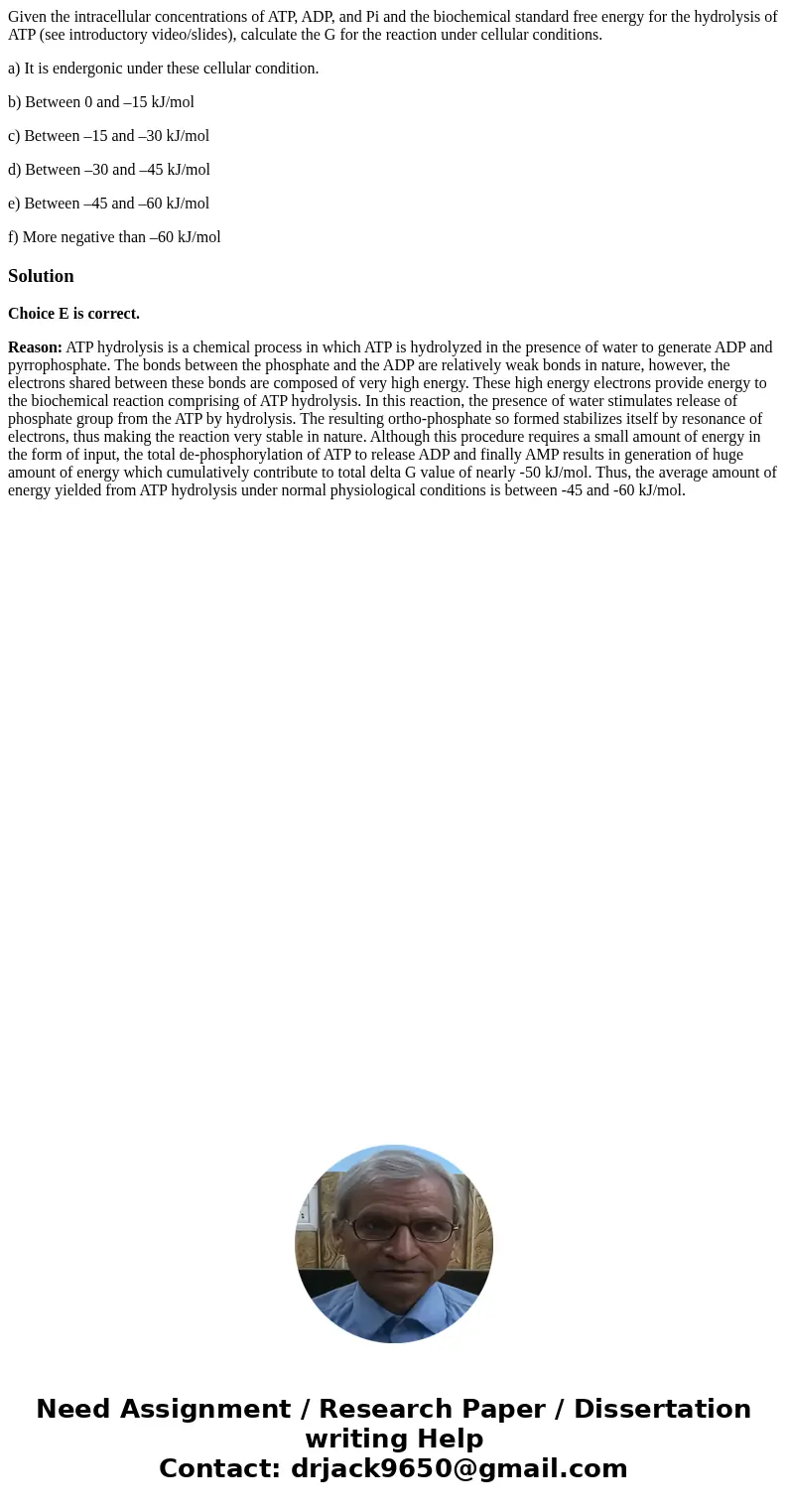Given the intracellular concentrations of ATP ADP and Pi and
Given the intracellular concentrations of ATP, ADP, and Pi and the biochemical standard free energy for the hydrolysis of ATP (see introductory video/slides), calculate the G for the reaction under cellular conditions.
a) It is endergonic under these cellular condition.
b) Between 0 and –15 kJ/mol
c) Between –15 and –30 kJ/mol
d) Between –30 and –45 kJ/mol
e) Between –45 and –60 kJ/mol
f) More negative than –60 kJ/mol
Solution
Choice E is correct.
Reason: ATP hydrolysis is a chemical process in which ATP is hydrolyzed in the presence of water to generate ADP and pyrrophosphate. The bonds between the phosphate and the ADP are relatively weak bonds in nature, however, the electrons shared between these bonds are composed of very high energy. These high energy electrons provide energy to the biochemical reaction comprising of ATP hydrolysis. In this reaction, the presence of water stimulates release of phosphate group from the ATP by hydrolysis. The resulting ortho-phosphate so formed stabilizes itself by resonance of electrons, thus making the reaction very stable in nature. Although this procedure requires a small amount of energy in the form of input, the total de-phosphorylation of ATP to release ADP and finally AMP results in generation of huge amount of energy which cumulatively contribute to total delta G value of nearly -50 kJ/mol. Thus, the average amount of energy yielded from ATP hydrolysis under normal physiological conditions is between -45 and -60 kJ/mol.

 Homework Sourse
Homework Sourse